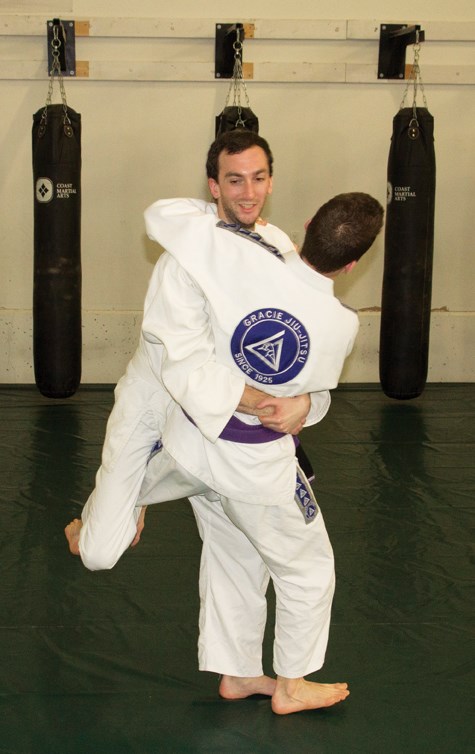It’s one month into the New Year so I finally decided to make good on my resolution to get out more and try new things, starting with a new sport: Gracie Jiu-Jitsu.
I came into contact with Scott Ewen – the head instructor of Coast Martial Arts – when I wrote a couple of articles about his studio, including the Bullyproof article in mid-January. Scott seemed like a very easy-going guy on the phone and every interview ended with him encouraging me to come out and train with their group.
“It’s just like a big family,” he said.
Eventually I agreed. I met with Scott and instructor Cosme Hlatky on Saturday to go over some of the basics of Gracie Jiu-Jitsu before my first real class on Thursday.
“The program is designed to defend yourself against a bigger, stronger and more athletic person,” Cosme explained.
“One amazing thing is that anyone can join because all the techniques are based on natural body movements, energy efficiency and street applicability,” Cosme said. “Will they work against someone trying to punch you in the face? Pretty much.”
Our first lesson went over some of the basic moves of Gracie Jiu-Jitsu. We started with distance, what Scott explained as a green-zone, yellow-zone, red-zone then green-zone.
Basically, when you’re at least two arm lengths from your opponent, you’re safe in the first green-zone. When you get closer than that, you enter the yellow-zone – a little dangerous – but to make it all the way inside your opponent’s defences to the second green-zone where you’re safe again, you need to pass through the red-zone where both of you are in striking distance of each other.
To do this, Scott said, you enter in one big step with both arms up protecting your head, then once you’re close enough you go for the clinch: a tight hug around your opponent’s lower ribs that keeps him too close to do any real damage to you.
From here you go for the take down, hooking your leg around one of theirs to undermine their base, then twisting them off balance so they fall and you land on top in a mount.
“One of our foundational techniques is positional control from mount,” Cosme said. “How to hold down a much larger opponent and exhaust them.”
Jiu-Jitsu originally came out of Japan, and was introduced to the Gracie family in Brazil around 1914. Carlos Gracie began teaching the traditional form of Jiu-Jitsu, but his younger brother Helio – who was born with a frail physique – later modified the style to be less physically intensive and to rely on leverage and timing over strength and speed.
Scott’s ambition in teaching isn’t to leave his students black and blue at the end of a class. Quite the opposite, Scott said, his classes are open to everyone of all ages and fitness levels. At the end of a class, the students should have broken a sweat, not – you know – bones.
For more information, see www.coastmartialarts.com and stay tuned for more of the Green Grappler.


